Find time (in ), when block falls off the bracket. A block rests as shown on a frictionless bracket of same mass. Constant force starts to act at time , when the distance of block from the end of bracket is .
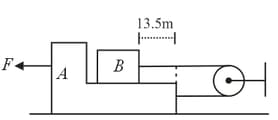


Important Questions on Newton's Laws of Motion (Without Friction)
In figure shown, pulleys are ideal. Initially the system is in equilibrium and string connecting to rigid support below is cut. What is the initial acceleration (in ) of ? (Given
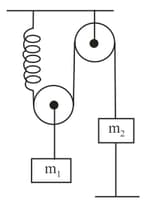
At , the lower end of the bar is just above the upper end of bar (mass of bar, , mass of bar, ). Find the time when upper end of block just crosses the lower end of . (Assume the system was released at ) .
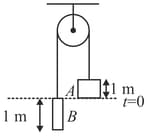
Two blocks and each of mass are placed on a smooth horizontal surface. Two horizontal forces and are applied on both the blocks and , respectively, as shown in figure. The block does not slide on block . Find the normal reaction acting between the two blocks (in ) if .

A small block of mass is kept at rest at the bottom of the inclined plane of a wedge of mass . A force of is applied on the wedge horizontally as shown in the diagram. All the surfaces are smooth. Determine the time taken in seconds by the mass to reach the highest point of the inclined plane of the wedge?
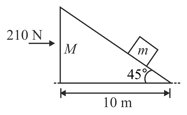
In the system shown in figure, all surfaces are smooth and string and pulleys are light. Angle of wedge . When released from rest, it was found that the wedge of mass does not move. Find .
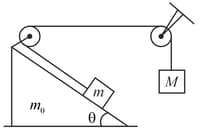

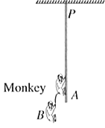
The upper surface of block is horizontal and its right part is inclined to the horizontal at angle . The mass of blocks and are and , respectively. Neglect friction and mass of the pulley. Calculate acceleration with which block should be moved to the right so that and can remain stationary relative to it.

